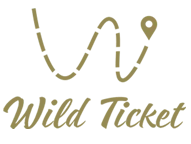You are here
Stone balbals at Burana settlement.

Travel to Tower Burana.
"... the Kipchaks, paying tribute to famous people who have passed away, erect a stone sculpture on the top of the mound, depicting a man holding a cup in his hands, and facing the east"
Guillaume de Rubruk.
Sights Tower Burana.
Burana Tower Historical and Archaeological Museum was opened in 1976. It contains a large number of artifacts found during excavations of the settlement - ceramics, coins, jewelry and more. In archeology, there are many names for these stone sculptures.
The original ancient Turkic name is "badiz" - (a figure carved from stone). Stone monuments-sculptures - balbals, represent one of the significant collections of architectural and archaeological materials of the Burana Tower Museum, there are more than 80 different stone sculptures.
The balbals were brought from destroyed ancient Turkic burial grounds, mainly from the Chui Valley, as well as from the vicinity of Lake Issyk-Kul and the foothills of Terskey Ala-Too, Kungey Ala-Too, and Kyrgyz Ala-Too. The museum's collection includes sculptures that are genuine masterpieces of the fine art of the Turks of the VIth - Xth centuries.
This type of stone sculptures is common in Northern Kyrgyzstan in places of compact habitation of nomads. Stone sculptures are sculptures with careful elaboration of facial features, headdress or hairstyle, jewelry, clothing, weapons, etc. At the same time, there are also primitively executed sculptures with only the face marked on the stone.
Most often, a male warrior was depicted with or without weapons and a cup in his right hand. Sculptures of women are less common. Stone sculptures of Kyrgyzstan are represented by portrait images of Turks. The sculpture was installed on graves or ritual structures - fences of quadrangular or rectangular shapes, laid out of stones.
With the spread of Islam, the burial ritual with the installation of stone sculptures on graves disappeared. The collection of the Burana Tower Museum includes sculptures that are genuine masterpieces of the fine art of the Turks of the VIth - Xth centuries.
Balbals are made of specially selected elongated stones, which after simple processing were given the shape of a human figure. In the overwhelming majority, men of Mongoloid appearance were depicted, with a mustache and beard, sometimes a hairstyle in the form of braids is reproduced.
A cup was often depicted in the right hand, the left hand lay on the hilt of a sword or dagger, which were knocked out hanging from the belt. The most carefully made sculptures give a complete idea of the cut of clothing, headdresses, earrings, bracelets, necklaces and other jewelry of that time.
There are, however, in a relatively small number, clearly female figures in a dress of a special style or naked. The general dating of the sculptures is established by historical methods. It is recognized that they appeared in Kyrgyzstan no earlier than the 6th century, i.e. during the period of the emergence of the Turkic Khaganate.
The upper date is presumably determined by the time of the penetration of Islam into the Tien Shan, i.e. the 10th-11th centuries. Already at this time, the sculptures were used to construct Muslim religious buildings. One of them was found near the Burana minaret, another served as the threshold of one of the Karakhanid tombs of Uzgen.
"Stone women". Balbals. The images of real people who lived 10 - 15 centuries ago are captured in stone sculptures. Ancient Turkic masters of stone sculpting developed special methods of conveying the characteristic features of a real person in sculptures.
Most of the sculptures of the ancient Turks do not give any three-dimensional image and represent an elongated rounded boulder - balbal, on which a stylized face is made, sometimes supplemented with details of clothing. Technically, they were executed by engraving and grinding in the form of contour lines. In the most skillful stone sculptures, one can feel the three-dimensional plasticity of the head, shoulders, hips.
In their proportions, iconography, interpretation of the image, composition, modeling, ancient Turkic stone sculptures do not belong to classical sculpture due to a special established canon, which consisted of strict frontality, symmetry, deliberate violation of anatomical proportions.
Due to the disproportion of individual parts of the human body and stylized facial features, the image of an ancient Turk appears short and motionless. However, by accurately conveying the characteristic features of the face (shape of the moustache, eyes, nose, number of braids, etc.), clothing details, specific weapons, vessels, and other items that belonged to the prototype, ancient Turkic masters achieved an emotional perception of the images captured in the sculptures.
Stone sculptures were usually installed in the following places:
1. At the burial sites of representatives of the tribal nobility, mainly outstanding warriors;
2. In areas considered sacred and patronized by the spirit of the father-ancestor;
3. Near the burial sites of outstanding rulers and military leaders of the Turkic Khaganates.


















Authority:
"Ancient monuments to Central Asia", Khashimov. Vladimir Mokrynin "Steppe sculptures of ancient Turkic peoples. Balbals and theory of "enemies".
Photos by:
Alexander Petrov.







